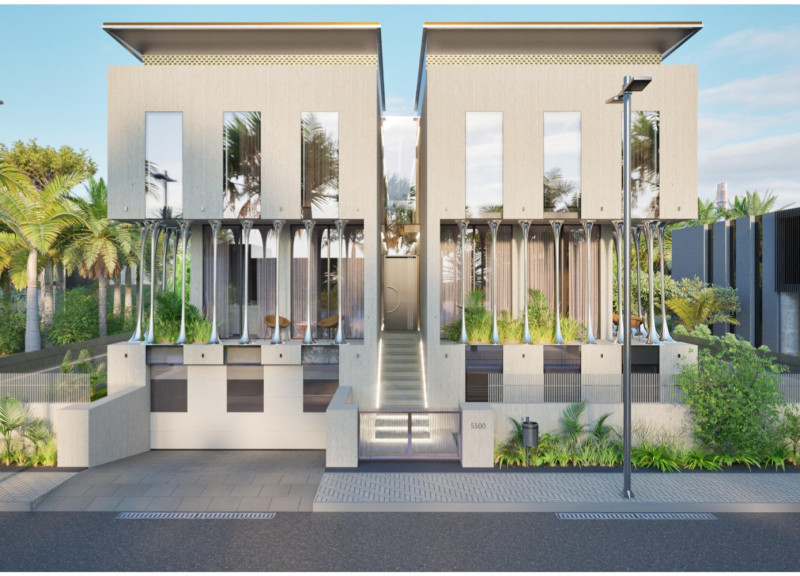5 key facts about this project
At the core of the project lies a strong conceptual foundation that marries modern architectural practices with an appreciation for the surrounding environment. The building's massing and form are carefully articulated to complement the existing architectural language while introducing innovative elements that enhance its presence. With a keen focus on human-scale design, the project features accessible entry points and circulation pathways that prioritize pedestrian movement, making the space inviting and welcoming.
Materiality plays a crucial role in this architectural endeavor, with a selection of materials chosen not only for their durability but also for their ability to resonate with the surrounding context. The use of locally sourced brick and exposed concrete conveys a sense of authenticity, allowing the building to establish a dialogue with its neighbors. Large expanses of glass are strategically incorporated to create transparency and visual connections between interior and exterior spaces, inviting natural light to penetrate deep into the building's core while offering views of the bustling street life outside. This interplay of materials not only enhances the thermal performance of the structure but also contributes to a rich sensory experience for users.
The project's function is multifaceted, catering to a diverse array of activities that reinforce its role as a community hub. From flexible gathering spaces to dedicated areas for cultural events, the design accommodates the varied needs of its users. Thoughtfully placed common areas encourage collaboration and social interaction, while private spaces are designed to ensure comfort and tranquility, striking a harmonious balance between communal and individual experiences.
What distinguishes this project is its unique design approach, which emphasizes sustainability and environmental responsibility. The building incorporates green roofs and rainwater harvesting systems, highlighting a commitment to reducing its ecological footprint. These elements not only enhance the building’s energy efficiency but also contribute to a greener urban landscape, promoting biodiversity and improving local microclimates.
The architectural ideas behind this project challenge conventional notions of space and use, proposing that buildings can act as catalysts for positive social interaction. By reimagining public and private spaces within an urban context, the design fosters a sense of belonging among its users and encourages community engagement. The integration of public art installations and landscaping elements further enriches the user experience, embedding cultural narratives into the very fabric of the project.
Throughout the design process, careful attention has been given to the architectural sections and plans, ensuring that every element serves a purpose while contributing to the overall harmony of the project. These architectural diagrams provide valuable insights into the organization of space and the flow within the building, illustrating how thoughtful design can facilitate a seamless interaction between various functions.
As you delve deeper into the nuances of this project, we invite you to explore the architectural plans, sections, and designs that reveal the intricacies of this undertaking. Each element, from the choice of materials to the spatial arrangements, further elucidates the thought-provoking architectural ideas that have shaped this distinctive project. We encourage you to engage with these details, as they offer a fuller understanding of how this design transcends mere functionality to create a lasting impact within its community context.


 GĻebs ŠČeglovs,
GĻebs ŠČeglovs, 























